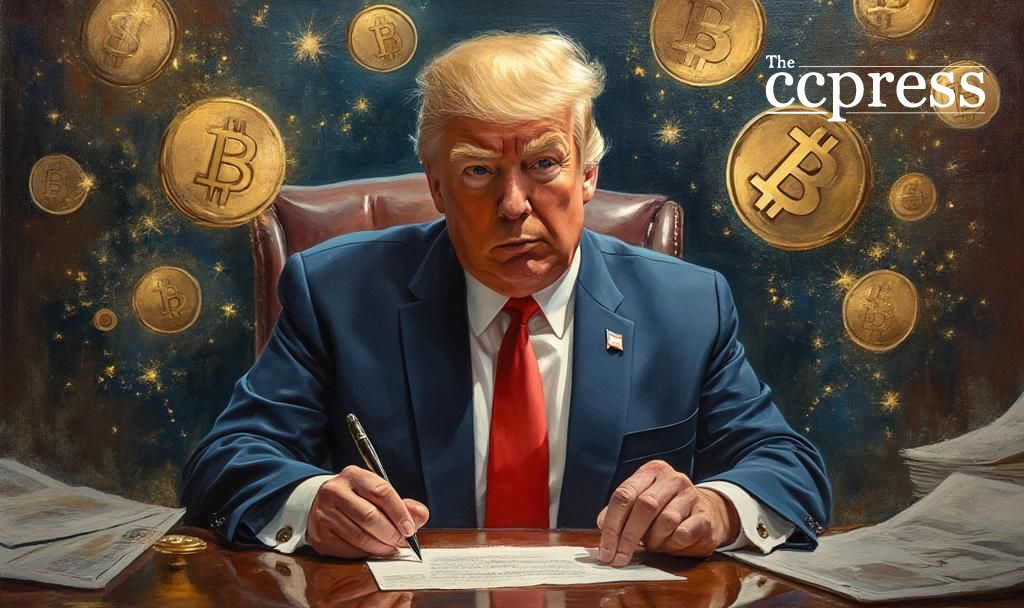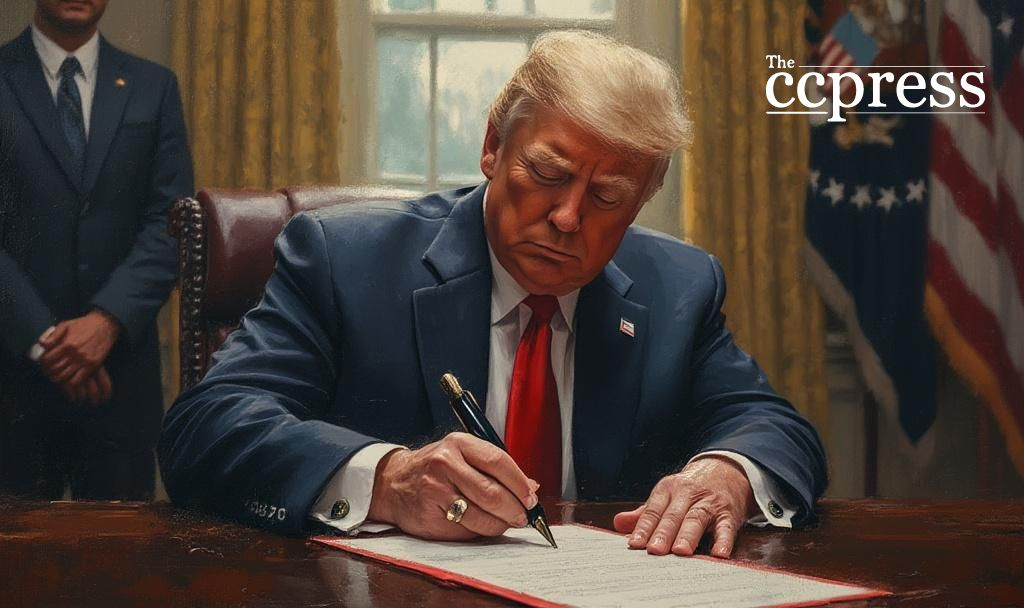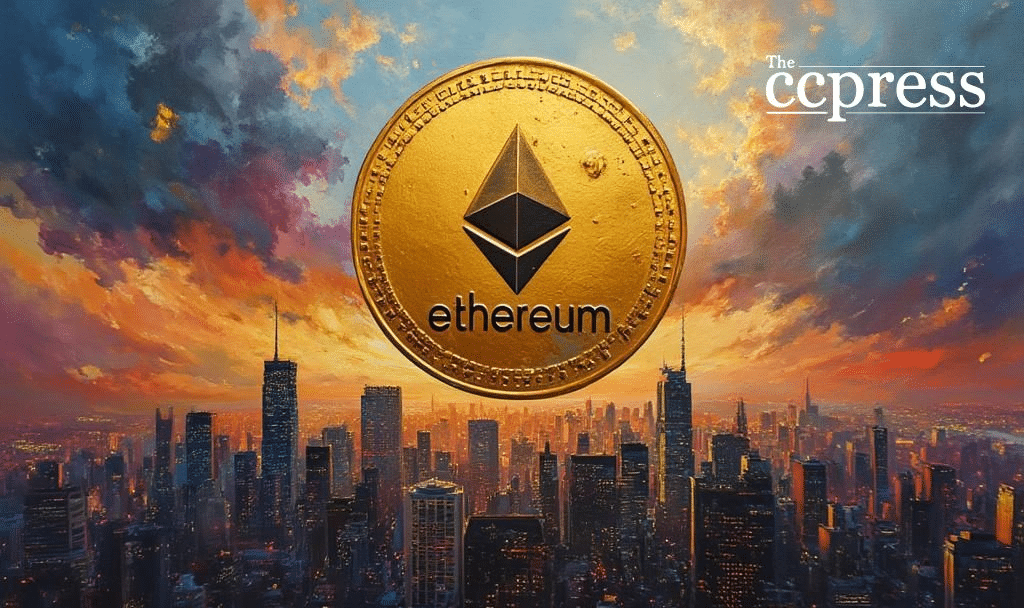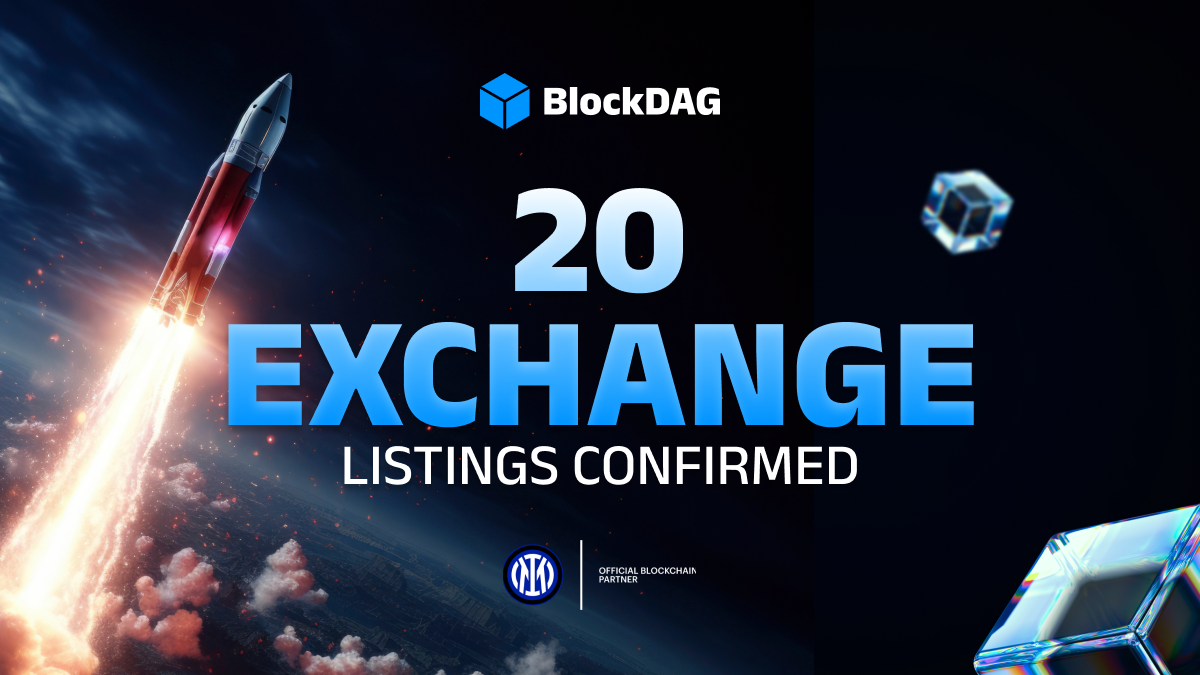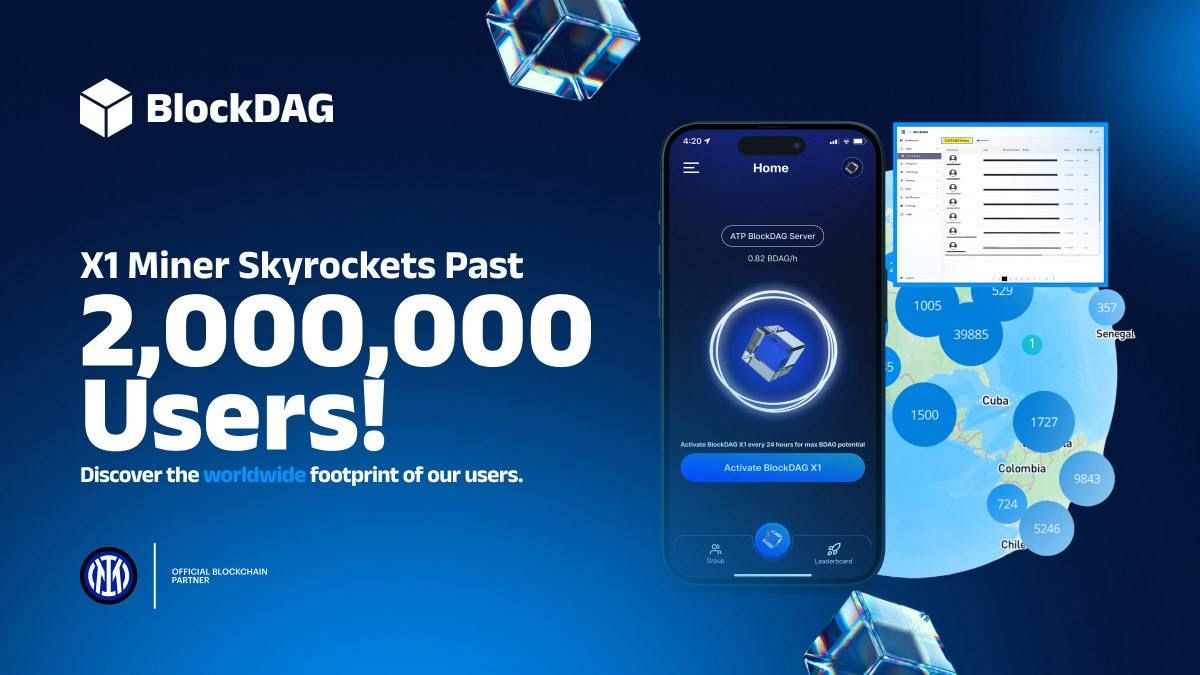Ethereum, Stellar, and Qubetics Are in the Spotlight as Crypto Policy Overtakes Charts in the Search for the Next Big Crypto
What happens when the most controversial political figure in America throws his weight behind digital assets—publicly and financially? This week, former President Donald Trump made waves by pledging support for cryptocurrency, going as far as rescinding anti-crypto policies and greenlighting crypto options within 401(k) retirement plans. Add to that the $2.5 billion worth of Bitcoin disclosed in Trump Media’s holdings, and it’s clear that crypto isn’t just back in the conversation—it’s being written into policy. With digital assets now directly tied to campaign promises, the market is watching closely. Ethereum, long seen as a foundational layer of decentralized finance, has seen renewed interest as new wallet integrations surface. While Stellar appears to be gaining traction with modest price forecasts, Qubetics—still in presale—presents a different kind of opportunity altogether, one that’s less reactive to regulation and more structured in how it builds long-term value.
Qubetics ($TICS) is setting itself apart by offering practical solutions to real-world digital issues—most notably through its decentralized VPN application. It takes on concerns legacy coins haven’t solved, such as secure internet access, privacy, and frictionless asset aggregation across multiple chains. While Ethereum is evolving its ecosystem through more accessible wallets and Stellar eyes a mild bullish turn based on projections, Qubetics answers a far more urgent need: digital freedom with measurable returns. And in a market now affected by political decisions and policy swings, the need for a structured, utility-first coin has never been clearer. With momentum around crypto intensifying, especially in the U.S., Qubetics may be quietly shaping up to become the next big crypto.
Bridging Physical Value with Web3 Through Real World Asset Tokenization
Qubetics is introducing a robust real world asset tokenization marketplace, designed to bring tangible, real-world value into the blockchain ecosystem. This feature enables individuals and businesses to tokenize assets such as real estate, artwork, commodities, or intellectual property, transforming them into blockchain-based digital tokens that can be owned, traded, or used as collateral in decentralized applications. Each token is backed by a verifiable claim to the underlying physical or financial asset, ensuring transparency, traceability, and legal compliance.
For businesses, this opens up streamlined access to global liquidity and fractional ownership models. A commercial property developer, for instance, could tokenize a real estate project and offer equity shares in the form of tokens to a global base of community members. For individuals, it means direct exposure to high-value assets that were traditionally inaccessible due to geographic, financial, or regulatory barriers. Qubetics ensures that each tokenized asset is integrated through smart contracts and cross-chain verification, offering users confidence and interoperability in their holdings. This tokenization marketplace is one of the core features aligning Qubetics with practical financial infrastructure, making it more than just a digital currency—it becomes a gateway to modern asset accessibility.
Qubetics Presale Heats Up: High ROI, Structured Growth, and Long-Term Upside for the Next Big Crypto
The current Qubetics presale, now in Stage 36, offers one of the clearest blueprints for structured growth in the entire crypto space. Each presale round lasts seven days, ending every Sunday at 12 AM sharp, followed by a consistent 10% price increase. At the time of writing, $TICS tokens are priced at $0.3064. With over $17.5 million already raised, 514 million tokens sold, and more than 27,300 token holders on record, the traction around Qubetics presale is undeniable.
For those evaluating potential returns, the upside is significant. At current prices, a $2,000 allocation would yield approximately 6,528 tokens. If $TICS hits $1 post-presale, the return would be $6,528—an ROI of 226.32%. At $5, the return climbs to $32,640 (1,531.58% ROI), and if it reaches $6, that jumps to $39,168 (1,857.90% ROI). The projection at $10 is $65,280 (3,163.16% ROI), and if it touches $15 following the mainnet launch in Q2 2025, the value rises to $97,920—an ROI of 4,794.74%. These figures not only make Qubetics presale the best crypto presale currently active, but also offer one of the clearest paths to long-term gains in the market. That level of return, paired with actual use-case innovation, sets Qubetics apart as a legitimate candidate for the next big crypto.
Stellar’s Trajectory Remains Grounded but Steady
As of the latest projections, Stellar (XLM) is priced around $0.282294. Forecasts show that while Stellar isn’t aiming for explosive growth, it does offer moderate gains that may appeal to community members seeking stable digital assets. The projected trading range for the remainder of the year is between $0.279315 and $0.405746. If it reaches its higher-end estimate, that translates to a potential 49.03% price increase. Meanwhile, short-term predictions place it around $0.285057 by June 9, 2025, signaling incremental movement.
This steady upward drift may reflect the market’s view of Stellar as a secure platform for cross-border transactions and token issuance, without the volatility seen in other altcoins. Though not dominating headlines, XLM’s progress is meaningful for those seeking predictable participation in the crypto space. With macroeconomic factors now aligned more favorably toward digital finance, Stellar’s functionality and reliability could give it continued staying power.
Ethereum’s Expanding Ecosystem: Wallets Lead the Charge
Ethereum continues to maintain relevance not just through its smart contract infrastructure but also by evolving access and security features for its massive community. According to Investopedia’s 2025 update, Ethereum’s best wallets reflect different user needs. Trezor Safe 5 is leading for secure, offline storage. Coinbase Wallet is winning over beginners thanks to its simple setup. Mobile users are leaning into Exodus for its interface, while Trust Wallet is praised for multi-asset support. And for those deeply embedded in the DeFi ecosystem, MetaMask remains a top choice due to its seamless dApp integration.
This broad wallet diversity shows Ethereum’s dedication to supporting a flexible ecosystem. In a market where user experience can define adoption rates, Ethereum’s focus on refining how people store and interact with their assets is a strategic move. These wallet options don’t just keep Ethereum in the conversation—they strengthen its case as the next big crypto by lowering the barriers to entry and increasing long-term engagement.
The Political Turn in Crypto: How U.S. Support Impacts Ethereum, Stellar, and Qubetics
The recent pro-crypto rhetoric from Trump’s campaign and disclosures of Bitcoin holdings have sent a clear message: digital assets are no longer fringe topics. The embrace of crypto in retirement accounts and mainstream politics suggests increasing legitimacy and regulatory support, which could shape market dynamics across the board. Ethereum, being deeply embedded in financial tooling, may benefit most from institutional trust. Stellar, which has long served cross-border functions, could find fresh relevance under a more favorable regulatory lens.
Qubetics, still in presale, offers a distinct type of protection from external volatility. Because each presale stage comes with a time-bound price jump, it maintains internal stability and predictable growth. With its mainnet scheduled for Q2 2025, Qubetics is essentially building a future-proof ecosystem—one that could withstand broader market turbulence thanks to its inherent utility and strategic structure. In this climate, all three projects stand to gain, but the degree of impact will likely vary depending on adoption, regulation, and utility delivery.
Final Thoughts: Why These Three Coins Might Define What Comes Next
In a market influenced by political policy shifts, tech advancement, and utility delivery, Qubetics, Stellar, and Ethereum each offer unique value propositions. Qubetics delivers on user privacy and real-time application through its decentralized VPN and continues to attract serious attention via its structured, performance-backed presale. Stellar maintains its credibility with reliable price movement and cross-border use cases.
Ethereum is evolving in its accessibility and functionality with a wallet suite that caters to all levels of users. These strengths collectively point to a reshaped crypto future, and for those looking to join this best crypto presale, Qubetics offers not just potential but clarity. Among the current contenders, it just might be the next big crypto.
For More Information:
Qubetics: https://qubetics.com
Presale: https://buy.qubetics.com/
Telegram: https://t.me/qubetics
Twitter: https://x.com/qubetics
FAQs
What is the next big crypto to watch?
Qubetics is currently gaining strong momentum due to its real-world utility and high ROI projections, making it a top contender for the next big crypto.
How does the Qubetics presale work?
Each stage lasts 7 days, ending every Sunday at 12 AM, with a consistent 10% price increase. This makes Qubetics presale both time-sensitive and strategically designed for early adopters.
What are Stellar’s current projections?
Stellar is projected to reach up to $0.405746 by year-end, reflecting a potential gain of 49.03% based on current pricing trends.
| Disclaimer: The text above is an advertorial article that is not part of theccpress.com editorial content. |


